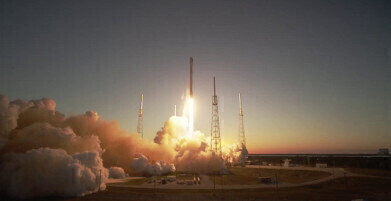Environmental Laboratory
New DSCOVR Satellite Delivers Earlier Solar Storm Warnings
Mar 04 2015
Thanks to modern technology we’re now able to arm ourselves with amplified protection against a myriad of dangers. Climate change and solar storms are two major concerns, with scientists constantly looking at ways to decelerate their destruction. This year measures have been given a serious boost with the launch of a deep space satellite called DSCOVR (short for Deep Space Climate Observatory). Designed to enhance environmental monitoring capabilities and issue Earth with faster and more accurate warnings of imminent solar storms, the next generation technology has created quite the buzz in the scientific, space and environmental communities.
The ultimate observation point
In Feb 2015, DSCOVR began its 110 day, 1.5 kilometre voyage to its strategic location between the Earth and the Sun. Scientists refer to this as ‘Lagrange Point 1,’ a specially determined site where the Earth’s gravity offsets the gravitational pull of the sun. This will allow DSCOVR to move at a slower orbit pace and keep both the Earth and the Sun in view. From here it will actively monitor planet Earth’s temperature as well as issue advance warnings of any approaching solar storms.
Crucial data for climate models
One of the key benefits of its strategic position is its ability to measure the Earth’s albedo. For space amateurs, this is a term used to describe the levels of light reflected from different areas of its surface. Albedo plays an important role in fashioning accurate climate models. Using the radiation data scientists will be able to continuously measure how the Earth’s atmosphere, landmasses and water bodies absorb and reflect the sun’s rays. This can then be used to identify long-term trends and recurring patterns that will help scientists to protect and manage the planet.
Other functions include tracking daily weather patterns, monitoring seasonal vegetation changes, keeping tabs on atmospheric pollution and measuring how much energy Earth emits into outer space. Al Gore described the project as a “critical observation mission” that will play a pivotal role in improving climate change strategies.
Up-to-the-minute solar wind warnings
Solar storms cause worldwide havoc, the powerful geomagnetic outbursts capable of disrupting power grids, radios, mobile communications, GPS navigation and satellites across the globe. Using DSCOVR data scientists will be able to pinpoint exact locations that will be affected by solar storms and issue ample warning. Should the sun emit a coronal mass ejection, DSCOVR will intercept the force and beam the severity of the approaching storm back to planet Earth. While it only buys a few minutes these can be used to shut down power grids, lessen electricity loads and make other preparations.
An added bonus of natural beauty
Yes, DSCOVR’s primary function is to intercept solar storms and create accurate climate models however thanks to its solar wind measuring capabilities it will also be able to provide better forecasts of prime viewing ties for aurora borealis and aurora australis.
Further reading
Weather and rainfall monitoring networks are becoming increasingly important in today’s world, as they are essential for our understanding of climate change and indeed for our very survival. The use of satellite imaging and data is vital for severe weather situations, especially in rapidly occurring explosive events, such as the recent volcanic eruptions in Iceland, during which pollutants were discharged into the upper atmosphere. For more information on this topics, read: Monitoring the Weather – More Relevant than Ever.
Im age Source: DSCOVR Liftoff
Digital Edition
IET 34.2 March 2024
April 2024
Gas Detection - Biogas batch fermentation system for laboratory use with automatic gas analysis in real time Water/Wastewater - Upcycling sensors for sustainable nature management - Prist...
View all digital editions
Events
Apr 30 2024 Melbourne, Australia
Apr 30 2024 Birmingham, UK
May 03 2024 Seoul, South Korea
May 05 2024 Seville, Spain
May 06 2024 Minneapolis, MN, USA


















